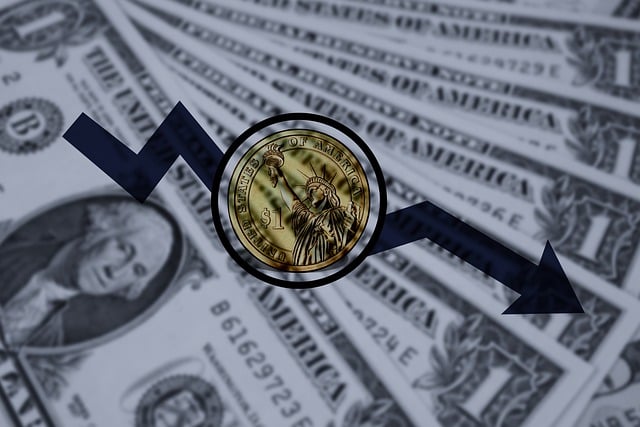How Accurate Is Coin Price Forecast in 2025: Realistic Expectations
Author: Jameson Richman Expert
Published On: 2025-10-23
Prepared by Jameson Richman and our team of experts with over a decade of experience in cryptocurrency and digital asset analysis. Learn more about us.
How accurate is coin price forecast is one of the most searched questions by investors, traders, and researchers as crypto markets mature into 2025. This article examines the limits and possibilities of coin price forecasting, describes common models, shows practical accuracy metrics, reviews real-world examples and studies, and gives actionable guidance for interpreting or producing forecasts. You’ll learn why some forecasts succeed, why many fail, how to test model reliability, and where to go to trade or further research.

Why the question “how accurate is coin price forecast” matters
Understanding forecast accuracy is crucial for risk management, capital allocation, and strategic planning. Crypto markets are characterized by high volatility, rapid regime shifts, and frequent structural changes (new protocols, regulatory moves, macro shocks). This makes forecasting both potentially rewarding and particularly risky. Investors asking how accurate is coin price forecast need to know not only typical error rates but also the conditions that make forecasts more or less reliable.
What “accuracy” means for coin price forecasts
Accuracy can mean several things depending on the forecasting horizon and purpose:
- Directional accuracy: percentage of times the forecast correctly predicts up vs. down movement.
- Point forecast accuracy: how close predicted prices are to realized prices using metrics like MAE, RMSE, and MAPE.
- Probability calibration: how well predicted probability distributions match observed outcomes (important for risk management and options pricing).
- Economic value: whether using the forecast improves returns after transaction costs and risk adjustments (the true bottom line for traders).
Different use-cases emphasize different accuracy definitions. A long-term investor may focus on probability calibration and economic value; a day trader cares about directional accuracy and latency.
Why coin price forecasts often underperform
There are structural reasons forecasts in crypto often fail or deliver inconsistent accuracy:
- High volatility and fat tails: Crypto returns typically have heavy-tailed distributions, causing frequent large deviations from expected values (see volatility concepts on Wikipedia: Volatility).
- Rapidly changing market microstructure: Liquidity, exchange spreads, and participant composition evolve quickly as new exchanges, derivatives, and products appear.
- Information shocks: Regulatory announcements, protocol upgrades, or major hacks can create structural breaks that invalidate past patterns.
- Data quality and survivorship bias: Spurious signals from poor-quality data or backtests that ignore delisted tokens inflate perceived accuracy.
- Model overfitting: Complex ML models can memorize noise in historical data but fail out-of-sample.
- Efficient-market considerations: If markets incorporate public information quickly (per the efficient-market hypothesis), simple public signals won’t give persistent edges.

Common forecasting approaches and their typical accuracy
Below are the major classes of forecasting methods, their strengths, and typical accuracy expectations.
Technical analysis and time-series methods
Includes moving averages, ARIMA/GARCH models, momentum indicators, and pattern recognition. These methods can offer reasonable short-term directional accuracy (often 50–60% directional hit rates in favorable regimes), but accuracy degrades quickly during regime shifts. Volatility models (e.g., GARCH) can forecast variance better than price level.
Fundamental on-chain and macro analysis
On-chain metrics (active addresses, fees, net flows to exchanges, staking ratios) and macro indicators (interest rates, dollar strength) can improve medium- to long-term forecasts when regimes are stable. Their predictive power is often noisy but valuable for scenario analysis. Research shows some on-chain metrics lead price changes, but signals are not uniformly strong across time (see research summaries on crypto studies at universities and forums).
Machine learning and deep learning
ML methods (random forests, gradient boosting) and deep learning (LSTM, transformers) can capture nonlinear relationships and latent patterns. In experiments, they often outperform simple benchmarks in-sample but sometimes fail to generalize. Proper cross-validation, walk-forward testing, and avoiding look-ahead bias are critical. Expect modest improvements in error metrics if carefully implemented — not miracle accuracy.
Ensemble models and hybrid strategies
Combining multiple models usually yields more stable and often more accurate forecasts by reducing model risk. Ensembles can improve directional accuracy and reduce tail exposure if diverse model classes are used.
Sentiment and alternative data
Social media sentiment, Google Trends, and derivatives order-book flows can add short-term predictive power. These signals are vulnerable to manipulation and require careful filtering.
Benchmarks and real-world accuracy ranges
There is no single accuracy number for coin price forecasts. Some empirical ranges based on industry experience and published studies:
- Short-term (minutes–hours): directional accuracy 55–65% for well-tuned models on liquid coins during calm markets; declines in volatile periods.
- Daily horizon: directional accuracy typically 52–60%; MAPE for price levels varies greatly with volatility but can be 5–20% depending on coin and regime.
- Weekly–monthly horizon: directional accuracy often hovers near 50–55% unless structural information is available; point forecasts usually have large error bands (20–100%+ for altcoins).
- Long-term (1 year+): point forecasts are highly uncertain; scenario-based ranges are more useful than precise values.
These are rough ranges and depend heavily on coin liquidity, model quality, and market conditions. Large-cap coins (Bitcoin, Ethereum) are generally easier to forecast directionally than small-cap tokens but still exhibit wide price swings.
How to evaluate a forecast: metrics and testing
To answer “how accurate is coin price forecast” for a specific model, you must evaluate it rigorously:
- Out-of-sample testing: Use walk-forward validation with realistic slippage and transaction costs.
- Error metrics: Use MAE (mean absolute error), RMSE (root mean square error), and MAPE for point forecasts; use Brier score or log-likelihood for probabilistic forecasts.
- Directional metrics: Compute hit rate, precision, recall, and F1-score for directional calls.
- Economic backtest: Simulate realistic trading (fees, latency, borrow costs) and measure returns, Sharpe ratio, max drawdown.
- Robustness checks: Test model through different market regimes, bootstrap samples, and stress scenarios.
- Calibration: For probabilistic forecasts, ensure predicted probabilities match observed frequencies (calibration curves).

Case studies and examples
Looking at concrete forecasts shows the limits of accuracy and how forecasts can still be useful.
Bitcoin: long-history lessons
Bitcoin forecasts have ranged from doom-and-gloom to hyper-optimistic. Short-term BTC forecasts using momentum and volatility signals can be accurate in calmer periods, but major price moves around halving cycles, ETF approvals, and macro shocks produced large forecast errors. For a perspective on longer-term bottom predictions and scenario analysis, see an in-depth analysis predicting a possible Bitcoin bottom in 2025 (Bitcoin bottom out in 2025 — in-depth analysis).
Ethereum and narrative-driven price moves
Ethereum’s price is tightly linked to network activity, DeFi growth, and issuance economics. Forecasts that combine on-chain metrics and policy analysis tend to capture some medium-term moves better than pure technical models. For example, analyses of Ethereum’s future growth and market potential give scenarios that can be used as inputs for probabilistic forecasts (Cathie Wood Ethereum price prediction — in-depth analysis).
Product/app credibility and forecast trust
Part of answering “how accurate is coin price forecast” is assessing the source. Many apps and platforms sell forecasts or signals. Evaluate legitimacy through transparency, backtest methodology, and third-party audits. For example, reviews that examine the authenticity and methodology of forecasting products can be informative (Is the Possible Finance app legit — review).
How to interpret forecasts as an investor or trader
Forecasts are tools, not guarantees. Here are practical rules for interpreting and using them:
- Use ranges not points: Prefer probabilistic ranges (e.g., 30% chance price > $X) rather than single-value predictions.
- Weight forecasts by skill: Combine model forecasts with macro/regime signals and weight them by historical out-of-sample performance.
- account for costs: Always include transaction fees, bid-ask spreads, funding rates, and taxes when evaluating forecast utility.
- Plan for tail events: Use stop-losses, hedges, or options strategies to protect against large unpredicted moves.
- Monitor calibration: Re-evaluate model performance regularly and recalibrate when accuracy degrades.
Actions to improve forecast accuracy
If you’re building or selecting forecasts, here are concrete steps to increase reliability:
- Data hygiene: Clean data, remove outliers carefully, and ensure correct timestamps across exchanges.
- Feature engineering: Use domain-informed features: realized volatility, momentum, on-chain flows, funding rates, open interest, and macro indicators.
- Regular retraining: Short retraining windows help track regime changes; consider online learning methods that adapt incrementally.
- Ensembling: Combine technical, on-chain, and ML models to reduce overfitting risk.
- Walk-forward testing: Use realistic forward testing that includes look-back and look-ahead restrictions.
- Transaction-aware backtests: Include slippage, fees, and liquidity constraints to see true economic value.
- Stress testing: Simulate black swan events and market halts to understand worst-case performance.

Practical toolkit and resources
When researching or acting on coin price forecasts, use reputable data sources and exchanges with strong liquidity and APIs. Examples of major exchanges you can register with for trading and data access:
- Binance (register) — deep liquidity across many pairs.
- MEXC (register) — a wide selection of tokens.
- Bitget (register) — derivatives and copy trading.
- Bybit (register) — strong derivatives liquidity.
For academic context on market behavior and theory, consult high-authority sources like:
- Wikipedia: Cryptocurrency — background and market structure.
- Wikipedia: Efficient-market hypothesis — theoretical limits on public-information forecasting.
- Federal Reserve research — macro context that can affect crypto markets.
Common myths about forecast accuracy
Separating myth from fact helps set realistic expectations.
- Myth: Models can predict crashes reliably. Fact: Predicting regime shifts and timing crashes is extremely difficult. Models can signal rising risk but usually not precise timing.
- Myth: More data always improves models. Fact: More data helps only if it’s informative and correctly processed. Low-quality or non-stationary data can hurt models.
- Myth: ML guarantees superior accuracy. Fact: ML helps capture complexity but also risks overfitting; simpler models sometimes generalize better.
- Myth: A single model is enough. Fact: No single model dominates across all regimes—ensembles and diversification of signals are safer.
How analysts communicate forecast accuracy responsibly
Good forecasters provide:
- Transparency: Clear explanation of inputs, assumptions, and testing methodology.
- Confidence intervals: Ranges that reflect uncertainty rather than point predictions.
- Economic-stress scenarios: Alternate scenarios for adverse regulatory or technological events.
- Performance records: Public out-of-sample performance with realistic cost assumptions and non-cherrypicked intervals.
When you read a coin price forecast, check for these elements before trusting the conclusion.

Regulatory, psychological, and market structure considerations
Forecast accuracy is influenced by non-technical factors too:
- Regulation: Policy announcements can create sudden market shifts. Monitoring regulator guidance (SEC, EU, etc.) is essential.
- Behavioral effects: Herding and narrative-driven flows can persist beyond fundamentals and temporarily invalidate historical relationships.
- Market infrastructure: New financial products (ETFs, derivatives) change supply/demand dynamics and forecasting relationships.
Practical checklist: Evaluate a forecast quickly
- Is the forecast probabilistic (ranges) or deterministic (single number)? Prefer probabilistic.
- Does the provider publish out-of-sample testing and realistic backtests?
- Are transaction costs and liquidity considered?
- Is the data source transparent and reliable?
- Does the forecast include scenarios for regulatory or technical shocks?
- Can you replicate the forecast logic using available data?
FAQ — Quick answers to common questions
Q: Can coin price forecasts be accurate enough to trade profitably?
A: Yes — some traders exploit short-lived inefficiencies and directional edges. Profitability depends on edge magnitude, cost structure, risk controls, and execution. Many institutional traders use forecasts as one input among many, not the sole decision-maker.
Q: How often should I retrain a forecasting model?
A: It depends on the horizon and volatility. For intraday models, retrain daily or weekly. For weekly/monthly models, monthly retraining may suffice. Use performance monitoring to trigger retraining when accuracy drops.
Q: Are paid signal services worth it?
A: Some services provide useful curated data or strategy automation, but evaluate them by checking transparency, independent track records, and whether their signals survive transaction costs. See thorough reviews before subscribing — for example, product reviews like the one on the Possible Finance app show how to vet services (Possible Finance review).

Summary: realistic expectations for 2025
Answering the question how accurate is coin price forecast requires context: forecasting horizon, coin, data quality, and model sophistication. In 2025, expect moderate improvements in forecasting tools due to better data, richer on-chain metrics, and mature ML methods — but no single method will deliver consistently precise point forecasts across all market regimes. The best practice is to use probabilistic forecasts, ensemble multiple models, incorporate robust risk controls, and evaluate economic value with realistic trading friction.
For deeper dives into trending 2025 scenarios (Bitcoin bottoming, Ethereum growth narratives) and legitimacy reviews of forecasting products, consult the linked analyses above: Bitcoin bottom analysis (link), Ethereum price prediction (link), and app legitimacy review (link).
Next steps — building your own reliable forecast process
If you want to build or assess forecasts, start with this practical plan:
- Gather high-quality price and on-chain data and clean it.
- Develop simple benchmark models (moving average, momentum) as baselines.
- Implement rigorous walk-forward testing including realistic fees and slippage.
- Experiment with ML models but prioritize interpretability and robustness checks.
- Combine models into ensembles and produce probabilistic outputs (prediction intervals).
- Backtest economic strategies, not only statistical accuracy, to confirm real-world utility.
- Continuously monitor and recalibrate models; treat forecasts as dynamic inputs, not immutable truths.
By following these steps you’ll be better equipped to judge answers to “how accurate is coin price forecast” for specific scenarios and to use forecasts in a way that improves decision-making without exposing yourself to catastrophic model risk.
For trading access and deeper live-market testing, consider registering on major exchanges with robust liquidity and API access: Binance, MEXC, Bitget, and Bybit.
Final thought
No forecast is perfect. The best practitioners aim for consistent improvements, transparent evaluation, and rigorous risk management. Keep expectations calibrated: forecasts are decision-support tools that can increase the probability of better outcomes when used responsibly, but they cannot eliminate uncertainty. Use them wisely, monitor performance, and stay adaptive as markets evolve in 2025 and beyond.